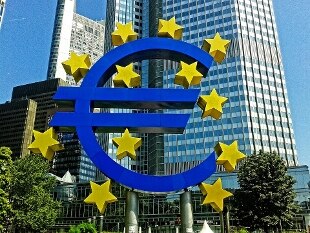"After two quarters of decline in output, euro area real GDP recovered in the second quarter of 2021 and is expected to strengthen further in the third". The ECB writes in the economic bulletin, anticipating that "the growth of the product should remain dynamic in the near future, although slowing towards the end of the year". However - we read - "the uncertainties related to the pandemic remain high". The ECB sees "balanced" risks: supply bottlenecks and expensive energy could slow GDP, a more vigorous recovery in consumption could accelerate it. The Governing Council of the ECB "is ready to adjust all its instruments, where appropriate, to ensure that inflation stabilizes on thetarget set by the ECB of 2% in the medium term ". The ECB writes it in the economic bulletin, noting that inflation should continue to accelerate in the course of 2021, and that" the current upturn will last longer than initially expected, but inflation is expected to subside over the next year. "Moderate recovery, supply bottlenecks and expensive energy. The euro area economy" has continued its vigorous recovery, albeit at a certain pace. more moderate measure ". This is what we read in the Economic Bulletin of the ECB, which explains:" Worldwide economic activity has continued to expand, albeit at a pace that is moderating considerably, in the context of a combination of factors,among which the persistent bottlenecks on the supply side take on greater weight ". In the short term, we read," the bottlenecks on the supply side and the increase in energy prices represent the main risks for the pace of recovery and for the outlook for inflation. The continuation of supply shortages and higher energy prices could slow the recovery. "Recovery depends on further progress in vaccinations" The recovery continues to depend on the progress of the pandemic and on further progress in vaccinations ": the ECB underlines in the monthly bulletin. "The combination of quantitative data, survey results and high frequency indicators - explains theEurotower - signals a continuation of robust GDP growth in the third quarter of this year, followed by moderation in the fourth. This result would reflect the increase in vaccination rates and the decline in infection rates in the third quarter that allowed the easing observed in the containment measures ".
Share
11 November 2021 "After two quarters of decline in output, real GDP in the euro area recovered in the second quarter of 2021 and is expected to further strengthen in the third".
The ECB writes in the economic bulletin, anticipating that "the growth of the product should remain dynamic in the near future, although slowing towards the end of the year".
However - we read - "the uncertainties related to the pandemic remain high".
The ECB sees "balanced" risks: supply bottlenecks and expensive energy could slow GDP, a more vigorous recovery in consumption could accelerate it.
The Governing Council of the ECB "is ready to adjust all its instruments, where appropriate, to ensure that inflation stabilizes at the ECB's target of 2% over the medium term". The ECB writes in the economic bulletin, noting that inflation should continue to accelerate during 2021, and that "the current upturn will last longer than initially expected, but it is expected that over the next year the inflation is reduced ".
Moderate recovery, bottleneck weight offered and expensive energy
The euro area economy "continued its vigorous recovery, albeit at a somewhat more moderate pace". This is what we read in the Economic Bulletin of the ECB, which explains: "Worldwide economic activity has continued to expand, albeit at a pace that is moderating considerably, in the context of a combination of factors, among which they assume greater weight persistent supply-side bottlenecks ".
In the short term, it says, "supply-side bottlenecks and rising energy prices represent the main risks for the pace of recovery and for inflation prospects. high energy prices could slow the recovery ".
Recovery depends on further vaccination progress
"The recovery continues to depend on the progress of the pandemic and further progress in vaccinations": the ECB underlines this in the monthly bulletin.
"The combination of quantitative data, survey results and high-frequency indicators - explains Eurotower - signals a continuation of robust GDP growth in the third quarter of this year, followed by a moderation in the fourth. This result would reflect the increase. of vaccination rates and the decline in infection rates in the third quarter that allowed the easing observed in the containment measures ".

